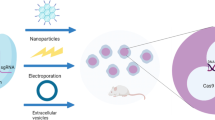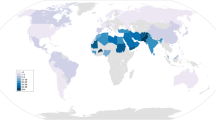Abstract
The scope of forensic kinship analysis is being extended to more distant or complex relationships. However, current methods and standards in this field do not meet the needs of casework. The next-generation sequencing (NGS) technology may hold an advantage in this field to traditional methods due to its strong power to get much more genetic information. To evaluate the effectiveness of NGS to identify the 2nd-degree kinship pairs, DNA samples of 227 individuals from 49 Hebei Han pedigrees were tested by Goldeneye™ 20A kit using capillary electrophoresis (CE) to confirm the relationships within each pedigree, and those of 111 individuals within 97 confirmed grandparent-grandchild or avuncular pairs were analyzed by ForenSeq™ DNA Signature Prep Kit using MiSeq® FGx™ DNA sequencing platform. We calculated the likelihood ratio (LR) based on ITO method and the identical by state (IBS) score of 97 kinship pairs and compared with those of 97 unrelated pairs. According to the results summarized and analyzed by Fisher discriminant analysis and leave-one-out cross-validation (LOOCV) method, ITO method showed higher accuracy than IBS method, even with less information. Therefore, we proposed a recommendation of the thresholds for pairwise 2nd-degree kinship identification for Hebei Han population based on ITO method. When using ITO method based on 94 SNPs and the length information of 27 autosomal STRs, cumulative likelihood ratio (CLR) > 1 and CLR < 0.1 are recommended as the thresholds of confirming and excluding, respectively. The accuracy applying such thresholds is greater than 95%, indicating the promising application value of NGS in this field and providing a direction for further kinship identification strategy selection. Further studies are needed to get the population genetic data of loci contained in the kit based on all sequence information including flanking regions to make full use of the NGS data to improve the accuracy of kinship analysis.


Similar content being viewed by others
References
Builes JJ, Manrique A, Aguirre D, Puerto Y, Bravo ML, Gusmão L (2009) Utility of Y- and X-STRs in the research of complex biological relationship. Forensic Sci Int Genet Suppl Ser 2:236–237. https://doi.org/10.1016/j.fsigss.2009.08.142
Kling D, Welander J, Tillmar A, Skare Ø, Egeland T, Holmlund G (2012) DNA microarray as a tool in establishing genetic relatedness—current status and future prospects. Forensic Sci Int Genet 6:322–329. https://doi.org/10.1016/j.fsigen.2011.07.007
Lareu MV, Garcia-Magarinos M, Phillips C et al (2012) Analysis of a claimed distant relationship in a deficient pedigree using high density SNP data. Forensic Sci Int Genet 6:350–353. https://doi.org/10.1016/j.fsigen.2011.07.011
Ye Y, Luo H, Liao L, Zhang J, Wei W, Wang Z, Hou Y (2014) A case study of SNPSTR efficiency in paternity testing with locus incompatibility. Forensic Sci Int Genet 9:72–75. https://doi.org/10.1016/j.fsigen.2013.11.004
Fan H, Chu JY (2007) A brief review of short tandem repeat mutation. Genomics Proteomics Bioinforma 5:7–14. https://doi.org/10.1016/S1672-0229(07)60009-6
Reich DE, Schaffner SF, Daly MJ, McVean G, Mullikin JC, Higgins JM, Richter DJ, Lander ES, Altshuler D (2002) Human genome sequence variation and the influence of gene history, mutation and recombination. Nat Genet 32:135–142. https://doi.org/10.1038/ng947
Ranajit CN, Stivers DN, Birg S et al (1999) The utility of short tandem repeat loci beyond human identification: implications for development of new DNA typing systems. Electrophoresis 20:1682–1696. https://doi.org/10.1002/(SICI)1522-2683(19990101)20:8<1682::AID-ELPS1682>3.0.CO;2-Z
Gelardi C, Rockenbauer E, Dalsgaard S, Børsting C, Morling N (2014) Second generation sequencing of three STRs D3S1358, D12S391 and D21S11 in Danes and a new nomenclature for sequenced STR alleles. Forensic Sci Int Genet 12:38–41. https://doi.org/10.1016/j.fsigen.2014.04.016
Gettings KB, Kiesler KM, Faith SA, Montano E, Baker CH, Young BA, Guerrieri RA, Vallone PM (2016) Sequence variation of 22 autosomal STR loci detected by next generation sequencing. Forensic Sci Int Genet 21:15–21. https://doi.org/10.1016/j.fsigen.2015.11.005
Vergen (2018) ForenSeq™ DNA Signature Prep Reference Guide. https://verogen.com/wpcontent/uploads/2018/08/ForenSeq-DNA-Prep-Guide-VD2018005-A.pdf
Churchill JD, Novroski NMM, King JL, Seah LH, Budowle B (2017) Population and performance analyses of four major populations with Illumina’s FGx Forensic Genomics System. Forensic Sci Int Genet 30:81–92. https://doi.org/10.1016/j.fsigen.2017.06.004
Guo F, Yu J, Zhang L, Li J (2017) Massively parallel sequencing of forensic STRs and SNPs using the Illumina ® ForenSeq™ DNA Signature Prep Kit on the MiSeq FGx™ Forensic Genomics System. Forensic Sci Int Genet 31:135–148. https://doi.org/10.1016/j.fsigen.2017.09.003
Wang J, Huang Y, Zhang Q et al (2012) The developmental validation of the homemade GoldeneyeTM 20A PCR amplification kit. Chin J Forensic Med 27:12–15
Warshauer DH, King JL, Budowle B (2015) STRait Razor v2.0: the improved STR allele identification tool--razor. Forensic Sci Int Genet 14:182–186. https://doi.org/10.1016/j.fsigen.2014.10.011
Gjertson DW, Brenner CH, Baur MP, Carracedo A, Guidet F, Luque JA, Lessig R, Mayr WR, Pascali VL, Prinz M, Schneider PM, Morling N (2007) ISFG: recommendations on biostatistics in paternity testing. Forensic Sci Int Genet 1:223–231. https://doi.org/10.1016/j.fsigen.2007.06.006
Lu HL, Zhou KW, Lü DJ et al (2009) Application of ITO method and discriminant functions in full sibling and half sibling identification. J Forensic Med 25:118–122. https://doi.org/10.3969/j.issn.1004-5619.2009.02.012
Sun L, Shi K, Tan L et al (2017) Analysis of genetic polymorphisms and mutations at 19 STR loci in Hebei Han population. Forensic Sci Int Genet 31:e50–e51
Huiling L, Qingen Y (2002) ITO method to calculate the chance of blood relationship between two individuals. Chinese J Forensic Med 17:188–191
Thompson EA (1975) The estimation of pairwise relationships. Ann Hum Genet 39:173–188
Butler JM, Budowle B, Gill P, Kidd KK, Phillips C, Schneider PM, Vallone PM, Morling N (2008) Report on ISFG SNP panel discussion. Forensic Sci Int Genet Suppl Ser 1:471–472. https://doi.org/10.1016/j.fsigss.2007.10.159
Tillmar AO, Phillips C (2017) Evaluation of the impact of genetic linkage in forensic identity and relationship testing for expanded DNA marker sets. Forensic Sci Int Genet 26:58–65. https://doi.org/10.1016/j.fsigen.2016.10.007
Liu Y, Guo L, Jin H, Li Z, Bai R, Shi M, Ma S (2017) Developmental validation of a 6-dye typing system with 27 loci and application in Han population of China. Sci Rep 7:4706. https://doi.org/10.1038/s41598-017-04548-1
Yuan L, Ge J, Lu D, Yang X (2012) Population data of 21 non-CODIS STR loci in Han population of northern China. Int J Legal Med 126:659–664. https://doi.org/10.1007/s00414-011-0664-4
Molinaro AM, Simon R, Pfeiffer RM (2005) Prediction error estimation: a comparison of resampling methods. Bioinformatics 21:3301–3307. https://doi.org/10.1093/bioinformatics/bti499
Just RS, Moreno LI, Smerick JB, Irwin JA (2017) Performance and concordance of the ForenSeq system for autosomal and Y chromosome short tandem repeat sequencing of reference-type specimens. Forensic Sci Int Genet 28:1–9. https://doi.org/10.1016/j.fsigen.2017.01.001
Köcher S, Müller P, Berger B, Bodner M, Parson W, Roewer L, Willuweit S (2018) Inter-laboratory validation study of the ForenSeq™ DNA Signature Prep Kit. Forensic Sci Int Genet 36:77–85. https://doi.org/10.1016/j.fsigen.2018.05.007
Venter JC, Adams MD, Myers EW, Li PW, Mural RJ, Sutton GG, Smith HO, Yandell M, Evans CA, Holt RA, Gocayne JD, Amanatides P, Ballew RM, Huson DH, Wortman JR, Zhang Q, Kodira CD, Zheng XH, Chen L, Skupski M, Subramanian G, Thomas PD, Zhang J, Gabor Miklos GL, Nelson C, Broder S, Clark AG, Nadeau J, McKusick VA, Zinder N, Levine AJ, Roberts RJ, Simon M, Slayman C, Hunkapiller M, Bolanos R, Delcher A, Dew I, Fasulo D, Flanigan M, Florea L, Halpern A, Hannenhalli S, Kravitz S, Levy S, Mobarry C, Reinert K, Remington K, Abu-Threideh J, Beasley E, Biddick K, Bonazzi V, Brandon R, Cargill M, Chandramouliswaran I, Charlab R, Chaturvedi K, Deng Z, Francesco VD, Dunn P, Eilbeck K, Evangelista C, Gabrielian AE, Gan W, Ge W, Gong F, Gu Z, Guan P, Heiman TJ, Higgins ME, Ji RR, Ke Z, Ketchum KA, Lai Z, Lei Y, Li Z, Li J, Liang Y, Lin X, Lu F, Merkulov GV, Milshina N, Moore HM, Naik AK, Narayan VA, Neelam B, Nusskern D, Rusch DB, Salzberg S, Shao W, Shue B, Sun J, Wang ZY, Wang A, Wang X, Wang J, Wei MH, Wides R, Xiao C, Yan C, Yao A, Ye J, Zhan M, Zhang W, Zhang H, Zhao Q, Zheng L, Zhong F, Zhong W, Zhu SC, Zhao S, Gilbert D, Baumhueter S, Spier G, Carter C, Cravchik A, Woodage T, Ali F, An H, Awe A, Baldwin D, Baden H, Barnstead M, Barrow I, Beeson K, Busam D, Carver A, Center A, Cheng ML, Curry L, Danaher S, Davenport L, Desilets R, Dietz S, Dodson K, Doup L, Ferriera S, Garg N, Gluecksmann A, Hart B, Haynes J, Haynes C, Heiner C, Hladun S, Hostin D, Houck J, Howland T, Ibegwam C, Johnson J, Kalush F, Kline L, Koduru S, Love A, Mann F, May D, McCawley S, McIntosh T, McMullen I, Moy M, Moy L, Murphy B, Nelson K, Pfannkoch C, Pratts E, Puri V, Qureshi H, Reardon M, Rodriguez R, Rogers YH, Romblad D, Ruhfel B, Scott R, Sitter C, Smallwood M, Stewart E, Strong R, Suh E, Thomas R, Tint NN, Tse S, Vech C, Wang G, Wetter J, Williams S, Williams M, Windsor S, Winn-Deen E, Wolfe K, Zaveri J, Zaveri K, Abril JF, Guigó R, Campbell MJ, Sjolander KV, Karlak B, Kejariwal A, Mi H, Lazareva B, Hatton T, Narechania A, Diemer K, Muruganujan A, Guo N, Sato S, Bafna V, Istrail S, Lippert R, Schwartz R, Walenz B, Yooseph S, Allen D, Basu A, Baxendale J, Blick L, Caminha M, Carnes-Stine J, Caulk P, Chiang YH, Coyne M, Dahlke C, Mays AD, Dombroski M, Donnelly M, Ely D, Esparham S, Fosler C, Gire H, Glanowski S, Glasser K, Glodek A, Gorokhov M, Graham K, Gropman B, Harris M, Heil J, Henderson S, Hoover J, Jennings D, Jordan C, Jordan J, Kasha J, Kagan L, Kraft C, Levitsky A, Lewis M, Liu X, Lopez J, Ma D, Majoros W, McDaniel J, Murphy S, Newman M, Nguyen T, Nguyen N, Nodell M, Pan S, Peck J, Peterson M, Rowe W, Sanders R, Scott J, Simpson M, Smith T, Sprague A, Stockwell T, Turner R, Venter E, Wang M, Wen M, Wu D, Wu M, Xia A, Zandieh A, Zhu X (2001) The sequence of the human genome. Science 291:1304–1351. https://doi.org/10.1126/science.1058040
Gill P (2001) An assessment of the utility of single nucleotide polymorphisms (SNPs) for forensic purposes. Int J Legal Med 114:204–210. https://doi.org/10.1007/s004149900117
Kidd KK, Pakstis AJ, Speed WC, Lagace R, Chang J, Wootton S, Ihuegbu N (2013) Microhaplotype loci are a powerful new type of forensic marker. Forensic Sci Int Genet Suppl Ser 4:e123–e124. https://doi.org/10.1016/j.fsigss.2013.10.063
Odriozola A, Aznar JM, Valverde L, Cardoso S, Bravo ML, Builes JJ, Martínez B, Sanchez D, González-Andrade F, Sarasola E, González-Fernández MC, Jarreta BM, de Pancorbo MM (2009) SNPSTR rs59186128-D7S820 polymorphism distribution in European Caucasoid, Hispanic, and Afro-American populations. Int J Legal Med 123:527–533. https://doi.org/10.1007/s00414-009-0370-7
Morimoto C, Manabe S, Kawaguchi T, Kawai C, Fujimoto S, Hamano Y, Yamada R, Matsuda F, Tamaki K (2016) Pairwise kinship analysis by the index of chromosome sharing using high-density single nucleotide polymorphisms. PLoS One 11:e0160287. https://doi.org/10.1371/journal.pone.0160287
Funding
This work was supported by the National Natural Science Foundation of China (81671875); and Natural Science Foundation of Hebei Province (H2017206351).
Author information
Authors and Affiliations
Contributions
SL and BC designed the study. MX, ZC, and QL recruited family samples and extracted DNA. MX and QD carried out CE test and NGS test. GM and LF performed data analysis. GM and SL wrote the first and last drafts of the manuscript, and all authors made critical revisions. SL and BC take responsibility for the integrity of the data and accuracy of the data analysis.
Corresponding authors
Ethics declarations
The ethical consent was obtained from the ethics committee of Hebei Medical University and statements on informed consent were signed by the adult volunteers and the parents of minors before the collection of blood samples
Disclosure of potential conflict of interest
The authors declare that they have no conflicts of interest.
Additional information
Publisher’s note
Springer Nature remains neutral with regard to jurisdictional claims in published maps and institutional affiliations.
Rights and permissions
About this article
Cite this article
Xu, M., Du, Q., Ma, G. et al. Utility of ForenSeq™ DNA Signature Prep Kit in the research of pairwise 2nd-degree kinship identification. Int J Legal Med 133, 1641–1650 (2019). https://doi.org/10.1007/s00414-019-02003-6
Received:
Accepted:
Published:
Issue Date:
DOI: https://doi.org/10.1007/s00414-019-02003-6




